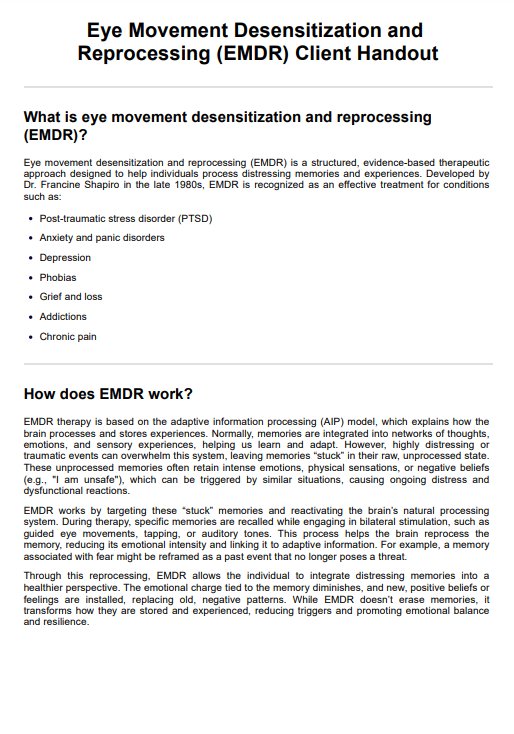EMDR therapy is a structured treatment designed to help individuals process trauma and distressing memories, such as those associated with posttraumatic stress disorder (PTSD). Through bilateral stimulation (e.g., eye movements, tapping, or tones), EMDR helps the brain reprocess "stuck" memories, reducing their emotional intensity and promoting healthier responses. This therapy is effective for PTSD, anxiety, and other conditions.

EMDR Client Handout
Give your clients a free EMDR Client Handout to help them understand the process as you guide them through EMDR therapy.
EMDR Client Handout Template
Commonly asked questions
The EMDR Client Handout is a helpful resource for clients. It clearly explains EMDR therapy, the eight phases of treatment, and what to expect during sessions. It acts as a guide for understanding the therapy process and serves as a tangible reference clients can revisit between sessions. Therapists can use the handout to reinforce key concepts and empower clients to engage actively in their healing journey.
Yes, the handout is versatile and can be used in various settings, including EMDR support groups, mental health practices, and training programs. It provides a consistent framework for explaining EMDR therapy and can be distributed as a PDF or physical copy to clients and trainees. This makes it a valuable resource for therapists, clients, and educators.
EHR and practice management software
Get started for free
*No credit card required
Free
$0/usd
Unlimited clients
Telehealth
1GB of storage
Client portal text
Automated billing and online payments











